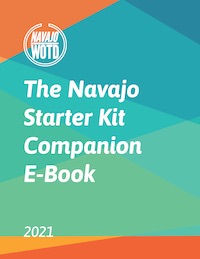muh ee
The Navajo word ma’ii (or mą’ii) is the coyote. In some literature ma’ii is described as the “Navajo trickster god”, which is a misnomer depending on how you look at it.
Coyote is certainly a cunning figure in Navajo tradition. But tricks are only one facet of ma’ii’s character.
The “god” qualifier is less certain, mainly because ma’ii manifested as a physical being, but shared the knowledge of the spiritual beings (Diyin Dine’é – Holy People). If there were direct “gods” in Navajo tradition, they would have to be the purely spiritual figures that came before the First World.
Diné bahane’ (the People’s story) will sometimes say that Ma’ii was first in the form of a human, who found the wandering group of First Man and First Woman in prior worlds. This is where other names for Coyote come from, like First Thought, First Angry, and The All-Mover.
In Diné bahane’, coyote’s cunning way was put to use against the Black God (or Fire God or Black Man) – himself a kind of trickster – when he stole the way to make fire. (In Navajo tradition, Black, or darkness, borders and contains fire and heat. In this way, it was understood that the stars in the sky were made of fire. Black is also the color associated with Náhookǫs, the northern direction.)
Akin to Prometheus, and a host of other figures in the mythologies of other cultures, it’s fair to say there’s much more to Coyote than is popularly held.
